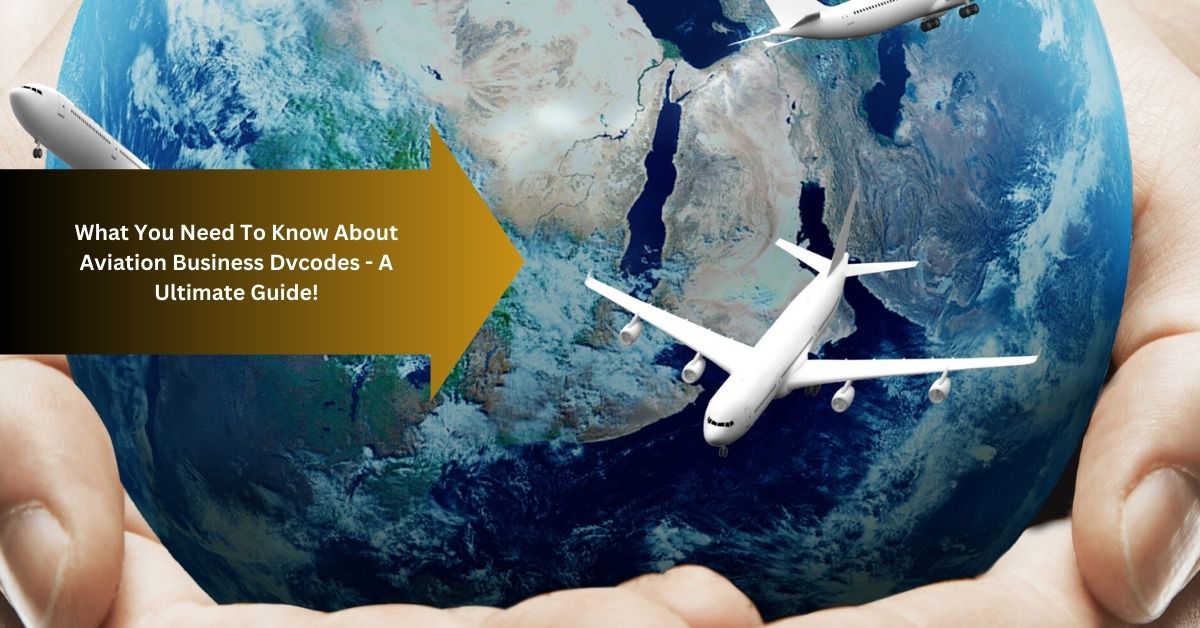As a pilot, understanding aviation business DVCodes has been crucial for navigating different aircraft types and communicating effectively with air traffic control. These codes ensure clear and standardized procedures, enhancing safety and efficiency in every flight operation.
DVCodes, or Designator Codes, are alphanumeric identifiers crucial in aviation business. They categorize aircraft types, airport facilities, and operational capabilities, ensuring standardized communication.
Unlock the secrets of aviation efficiency with DVCodes—a vital tool for clear communication in the aviation industry.
What are DVCodes?
DVCodes, short for Designator Codes, are alphanumeric identifiers used within the aviation industry to categorize and describe various elements related to aircraft, airports, and operations. These codes play a crucial role in standardizing communication and ensuring clarity among aviation professionals worldwide.
1. Aircraft Identification:
Each type of aircraft is assigned a specific DVCodes. These codes encompass details such as the aircraft manufacturer, model, and variant. For instance, the Boeing 737-800 has a unique DVCodes that distinguishes it from other models like the Airbus A320.
2. Airport Facilities:
Airports use DVCodes to identify and manage their facilities effectively. This includes codes for runways, taxiways, gates, terminals, and other infrastructure. For example, the code for a specific runway at an airport might indicate its length, orientation, and surface type.
3. Operational Capabilities:
DVCodes also denote the operational capabilities of aircraft and airports. They describe aspects such as the equipment onboard an aircraft (e.g., navigation systems, avionics) or the services available at an airport (e.g., fueling, ground handling).
4. Standardization and Global Use:
One of the primary purposes of DVCodes is to establish a standardized system that can be universally understood and used across different countries and regions. This uniformity facilitates efficient communication, enhances safety, and supports seamless operations in the global aviation network.
5. Evolution and Adaptation:
Over time, DVCodes have evolved to accommodate advancements in aviation technology and operational practices. New codes are introduced to reflect changes in aircraft design, airport infrastructure, and regulatory requirements, ensuring that the system remains relevant and effective.
How are DVCodes used in aircraft identification?
DVCodes, also known as Designator Codes, play a crucial role in accurately identifying and categorizing different types of aircraft within the aviation industry.
These alphanumeric identifiers provide specific information about each aircraft model, helping pilots, air traffic controllers, maintenance crews, and aviation professionals effectively manage and operate aircraft.
1. Unique Identification:
Each type of aircraft is assigned a unique DVCodes that distinguishes it from other models. This code typically includes details such as the aircraft manufacturer, model series, and specific variant.
For example, popular commercial aircraft like the Airbus A320 and Boeing 737 have distinct DVCodes that specify their respective models and configurations.
2. Operational Relevance:
Pilots rely on DVCodes to identify the specific characteristics and capabilities of the aircraft they are flying. This includes information about the aircraft’s size, seating capacity, engine type, fuel capacity, and operational limitations.
Understanding these details helps pilots make informed decisions during flight planning, navigation, and operational procedures.
3. Communication with Air Traffic Control:
Air traffic controllers use DVCodes to communicate essential information about aircraft to pilots and other control centers.
By referencing the DVCodes, controllers can provide clear instructions regarding flight paths, altitude changes, and traffic sequencing. This standardized communication ensures safe and efficient air traffic management.
4. Maintenance and Technical Documentation:
Maintenance crews and engineers utilize DVCodes to access technical manuals, maintenance procedures, and spare parts specifications specific to each aircraft model.
These codes streamline maintenance operations by ensuring that the correct procedures and components are used for each aircraft, thereby maintaining safety and operational reliability.
5. Regulatory Compliance:
Regulatory authorities and aviation safety agencies require accurate identification of aircraft during regulatory inspections, audits, and certification processes.
DVCodes provide a standardized method for verifying compliance with safety standards and operational regulations applicable to different aircraft types.
6. Global Recognition:
DVCodes follow international standards set by organizations such as the International Civil Aviation Organization (ICAO).
This global recognition ensures that aircraft identification using DVCodes is consistent and universally understood across international borders, facilitating smooth operations and interoperability in the global aviation network.
Why are DVCodes important in aviation?
DVCodes, or Designator Codes, play a pivotal role in the aviation industry by providing standardized alphanumeric identifiers for various elements such as aircraft, airports, and operational capabilities.
These codes are essential for several reasons, contributing significantly to safety, efficiency, and regulatory compliance within aviation operations.
1. Standardized Communication:
DVCodes serve as a universal language in aviation, allowing pilots, air traffic controllers, ground crews, and other stakeholders to communicate effectively and accurately.
By using standardized codes, misunderstandings and errors in communication are minimized, enhancing operational safety and efficiency.
2. Aircraft Identification:
One of the primary uses of DVCodes is in identifying different types of aircraft. Each aircraft model and variant is assigned a unique code that specifies its manufacturer, model series, configuration, and operational capabilities.
This standardized identification system ensures that all parties involved in aircraft operations can quickly and reliably identify specific aircraft types.
3. Airport Management:
Airports use DVCodes to categorize and manage their facilities, including runways, taxiways, gates, terminals, and service areas.
These codes provide detailed information about the characteristics and capabilities of airport infrastructure, aiding in efficient planning, maintenance, and utilization of airport resources.
4. Operational Efficiency:
By using DVCodes, aviation professionals can streamline operational procedures such as flight planning, aircraft routing, ground handling, and maintenance activities.
The codes facilitate quick access to essential information about aircraft specifications and airport facilities, reducing turnaround times and optimizing resource allocation.
5. Safety and Risk Mitigation:
Clear and precise communication enabled by DVCodes enhances safety measures within the aviation industry. Pilots and air traffic controllers can accurately convey critical information about aircraft capabilities, flight intentions, and emergency situations, thereby minimizing the risk of incidents and accidents.
6. Regulatory Compliance:
Regulatory authorities and aviation safety agencies mandate the use of DVCodes to ensure compliance with international aviation standards and regulations.
These codes help verify aircraft specifications, operational capabilities, and adherence to safety protocols during inspections, audits, and certification processes.
7. Global Compatibility:
DVCodes follow international standards established by organizations such as the International Civil Aviation Organization (ICAO), ensuring compatibility and interoperability across different countries and regions. This global recognition allows for seamless coordination and collaboration in the global aviation network.
FAQ’s:
1. Are DVCodes used internationally?
Yes, DVCodes follow international standards established by organizations like the International Civil Aviation Organization (ICAO). They are recognized globally, allowing for consistent communication and operational practices across different countries and regions.
2. How have DVCodes evolved over time?
DVCodes have evolved alongside advancements in aviation technology and operational practices. New codes have been introduced to accommodate changes in aircraft design, airport infrastructure upgrades, and emerging industry requirements, ensuring their relevance and effectiveness.
3. Who uses DVCodes in the aviation industry?
DVCodes are utilized by various stakeholders in aviation, including pilots, air traffic controllers, airport managers, maintenance personnel, regulatory authorities, and aviation technology developers. These codes facilitate communication and decision-making throughout all aspects of aviation operations.
4. Where can I learn more about specific DVCodes and their applications?
Additional information about DVCodes can be found through aviation regulatory agencies, industry publications, training programs, and online resources dedicated to aviation terminology and standards.
5. How can understanding DVCodes benefit my career in aviation?
A solid understanding of DVCodes demonstrates proficiency in aviation terminology and operational standards, making you a more effective and knowledgeable professional in roles related to aircraft operations, airport management, safety compliance, and aviation technology development.
Conclusion:
DVCodes are important codes in aviation that categorize aircraft types, airport facilities, and operations. They help professionals communicate clearly, ensuring safety and following rules in global aviation.










